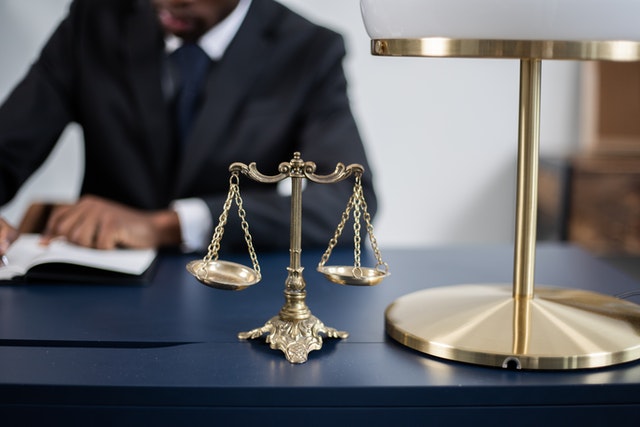Exploring the Key Players and Processes in Energy Litigation: A Comprehensive Guide
Welcome to our comprehensive guide on energy litigation, where we delve into the dynamic world of legal battles that shape the future of power. From towering giants in the industry to courtroom dramas that hold immense consequences, this blog post takes you on an engaging journey through the key players and processes involved in energy litigation. So fasten your seatbelts as we unravel the intricate web of lawsuits, negotiations, and high-stakes conflicts that define this ever-evolving landscape. Get ready to explore how both big corporations and passionate individuals fight tooth and nail for their interests while shaping tomorrow’s energy policies – all under the watchful eye of justice!
Introduction to Energy Litigation
When it comes to energy litigation, there are a few key players and processes that you need to be aware of. Here is a comprehensive guide to help you understand the ins and outs of energy litigation.
The first player in energy litigation is the utility company. The utility company is responsible for generating and distributing electricity or natural gas to customers. They are also responsible for maintaining the power lines and infrastructure. Utility companies are regulated by state utility commissions.
The second player is the regulatory body. The regulatory body sets the rules and regulations that the utility companies must follow. These rules and regulations are meant to protect consumers from unfair practices by the utility companies.
The third player is the courts. The courts adjudicate disputes between the regulatory body and the utility companies. They also hear appeals from decisions made by the regulatory body.
The fourth player is the consumer. Consumers are individuals or businesses who use electricity or natural gas provided by a utility company. They may be residential customers or commercial customers.
The fifth player is the attorney general’s office. The attorney general’s office represents the interests of consumers in court proceedings against utility companies. They may also investigate complaints against utility companies and take enforcement action against them if necessary.
Overview of Key Players in Energy Litigation
As energy litigation can be a complex and often lengthy process, it is important to understand the key players involved and their respective roles in order to ensure the best possible outcome for your case. Here is an overview of the key players in energy litigation:
The Plaintiff: The party who initiates the lawsuit is known as the plaintiff. In energy litigation, the plaintiff typically alleges that they have been harmed by the actions of the defendant, and are seeking damages as a result.
The Defendant: The party against whom the lawsuit is filed is known as the defendant. In energy litigation, the defendant typically denies any wrongdoing and may counterclaim against the plaintiff if they believe they have been wrongfully accused.
The Judge: The judge presiding over the case will make rulings on procedural matters and evidentiary issues, and will ultimately decide whether or not the plaintiff prevails in their lawsuit.
The Jury: If a jury trial is requested by either party, it will be up to the jury to hear evidence and testimony presented by both sides and render a verdict in favour of either the plaintiff or defendant.
Types of Disputes Commonly Resolved in Energy Litigation
There are a variety of disputes that can arise in the energy sector, from disagreements over contracts to allegations of fraud or negligence. Here are some of the most common types of disputes that are resolved through energy litigation:
Contract Disputes: Contract disputes are one of the most common types of disputes seen in energy litigation. These disputes can arise between two companies who have a contract for the purchase or sale of energy products, or between a company and an individual who has contracted for the provision of services.
Fraud and Negligence Claims: Fraud and negligence claims are also relatively common in energy litigation. These claims can be made by investors who believe they have been defrauded by a company, or by individuals who have been harmed by a company’s negligence.
Disputes Over Regulation: Another type of dispute that is often seen in energy litigation is a disagreement over regulatory issues. These disputes can involve arguments over which regulations should apply to a particular project, or over how those regulations should be interpreted.
Environmental Disputes: Environmental disputes are also fairly common in the energy sector. These disputes can arise between companies and environmental groups, or between companies and government agencies charged with regulating environmental impact.
Processes Involved in an Energy Litigation Case
The first step in an energy litigation case is the filing of a lawsuit. The plaintiff(s), usually a group of investors or landowners, allege that the defendant(s), typically a utility company, has engaged in malfeasance that has led to financial damages.
The second step is the discovery process, during which both sides gather evidence to support their respective claims. This process can be lengthy and expensive, and often requires the assistance of experts.
The third step is trial, during which a judge or jury hears evidence and arguments from both sides and renders a decision. If the plaintiff prevails, the fourth step is execution of the judgement, which may include an order for the defendant to pay damages or take other corrective action.
Important Considerations for All Parties Involved
When it comes to energy litigation, there are a few important considerations that all parties involved should keep in mind. First and foremost, it is important to understand the different types of energy litigation and how they can impact the case. Secondly, it is essential to have a clear understanding of the key players involved in energy litigation, as well as their respective roles in the process. It is also important to be aware of the potential risks and benefits associated with energy litigation before making any decisions.
Conclusion
Energy litigation can be a daunting process that requires deep knowledge of complex laws. However, with the right guidance and research, companies can navigate the energy litigation landscape with confidence and clarity. We hope this comprehensive guide has provided you with a better understanding of key players and processes involved in energy litigation, enabling you to make informed decisions when encountering legal challenges. With proper preparation, your company will have all the necessary tools to take on any legal dispute related to energy law.




